We’ve all seen abandoned cities, towns, and whole countries on TV or silver screens. Be it a horror movie or a post-apocalyptic show, the eerie images of what was once a settlement full of life can feel truly uncanny and give us a chill down the spine. Although, away from our regular hustle and bustle of everyday life, such places exist all around the world.
Ghost towns are abandoned settlements, usually ones that contains substantial visible remains. There are many reasons why a town becomes a ghost town, like economic decline, war, natural disasters or pollution. Usually, ghost towns are completely uninhabited, however, there are some ghost towns that have very small populations. Some of the towns are restricted and access to them is at times forbidden, while others are turned into tourist attractions or parks. Scroll down below to read about some of the most interesting ghost towns around the world and don’t forget to comment and vote for the ones that you liked the most!
Bodie, California
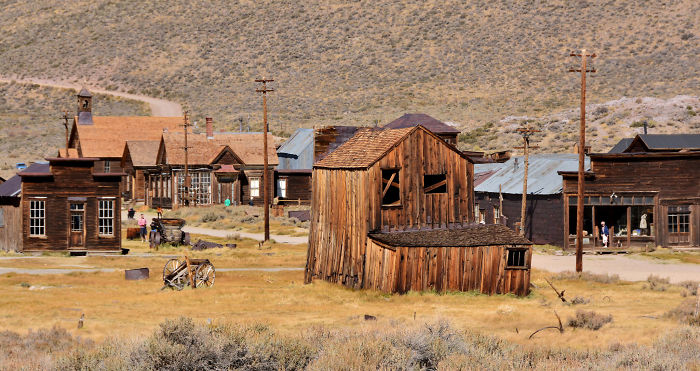
Image credits: Mike McBey
Back in the 19th century, after the discovery of a profitable line of gold Bodie was a booming town. At its best times, the town had 5,000 to 7,000 thousand residents along with 2,000 buildings.
The town started to decline at the beginning of the 20th century, showing the first signs with the dropping profits and a few years later, abandoned railway track.
Today, Bodie is an authentic Wild West ghost town that has just 110 buildings standing. Visitors can freely walk the deserted town streets and see the interior remains, as they were left, shelves still stocked with goods or occasional litter on the ground, but removing it is against the rules of the park.
Thurmond, West Virginia
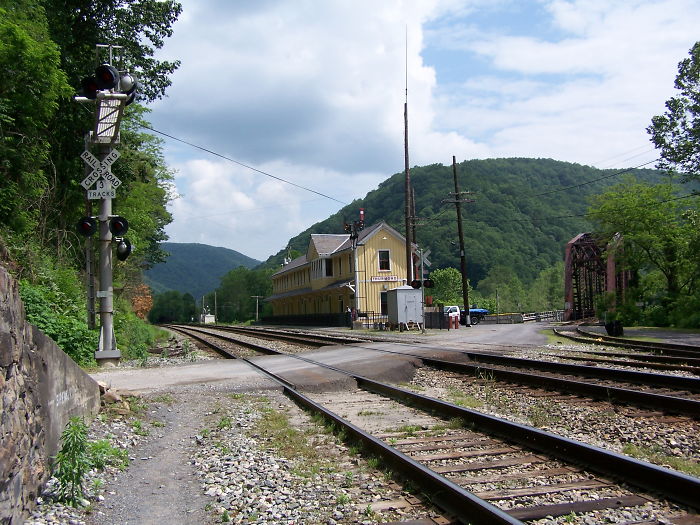
Image credits: Brian M. Powell
During the prime times of coal mining, Thurmond was once a prosperous town with a number of businesses and facilities for the regional railway. But now, all they have left is a passenger railway depot which is the second least used station in all of the states.
While not entirely a ghost town, as there are still 5 people living in it, the majority of the buildings and the surrounding area has a haunting feeling to it due to being abandoned years ago.
Kennecott, Alaska
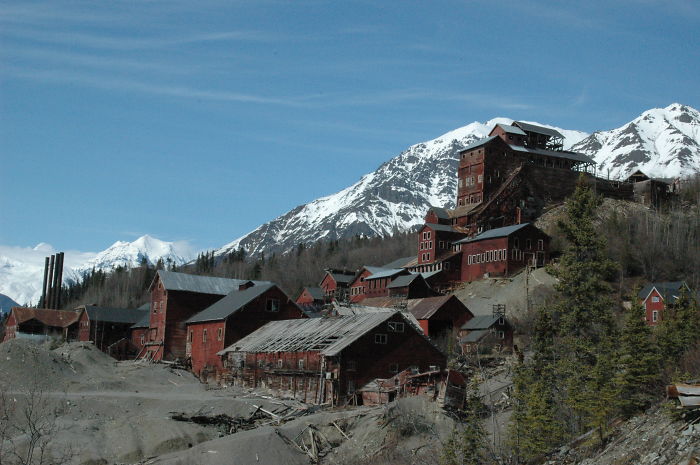
Image credits: Sewtex
Kennecott was once the center mining camp that connected several copper mines nearby. It all started back in 1900 when two prospectors spotted “a green patch far above them in an improbable location for a grass-green meadow.” What it turned out to be was the richest concentration copper ore ever discovered, which had up to 70% concentration of pure chalcocite. During these times, Copper became an extremely valuable mineral due to the inventions of electricity, automobiles, and telephones, therefore hundreds of people came to this place to work 7 days a week, to send the money home to their families.
During all the active years, from 1909 till 1938, Kennecott mines produced over 4.6 million tons of ore that had made a profit greater than 100 million dollars.
Unfortunately, in the mid-20s a local geologist predicted that the end of the high-grade ore bodies was inevitable. Most of the high-grade ores were depleted in the early 30s and the five mines closed one after another. The last train left Kennecott on November 10, 1938, marking the end of its time and leaving the place a ghost town.
St. Elmo, Colorado

Image credits: KBOutdoors
Seemingly just like every abandoned place in the USA, St. Elmo was a gold and silver mining town. Back in 1880, the town was named “Forest City”, but since every other town was named the same way, it was changed to St. Elmo by one of the founding fathers, Griffith Evans, who was reading a novel with the same title. The town was at its peak in 1890 but the mining industry started to decline in the early 1920s. In 1922 the railroad discontinued service and once the mining industry was shut down, town population started to decrease dramatically. Nowadays, St. Elmo is considered a ghost town (although the town is still inhabited) and is mostly a tourist destination. St. Elmo is also considered to be one of Colorado’s best-preserved ghost towns.
Bannack, Montana
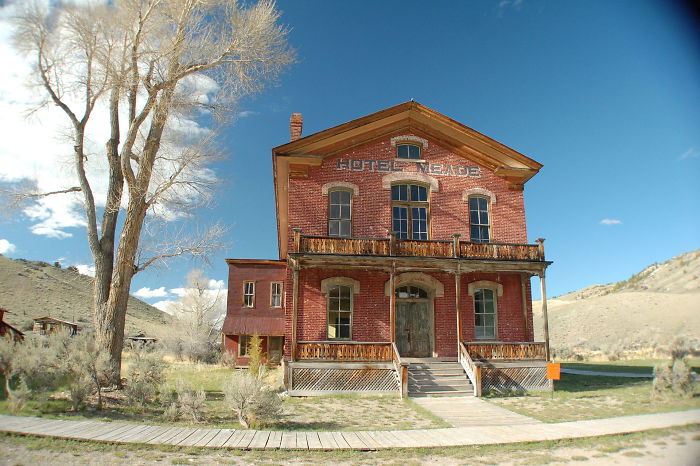
Image credits: Scenic Montana
The town was founded back in 1862 with a major gold discovery in that year. One of the city founders was Dr. Erasmus Darwin Leavitt, a physician, who gave up medicine for a time to become a gold miner.
Although when he started gold mining and practicing medicine, he soon found out that he had more reputation as a physician than as a miner, and that there was greater profit in allowing someone else to wield his pick and shovel while he attended to his profession. Subsequently, he moved elsewhere to devote the rest of his life to his medical practice.
At the town’s peak, Bannock had a total population of around ten thousand residents with the last residents leaving in the 1970s. 60 structures are still remaining in the abandoned city, many well preserved and can be explored by visitors.
Rhyolite, Nevada
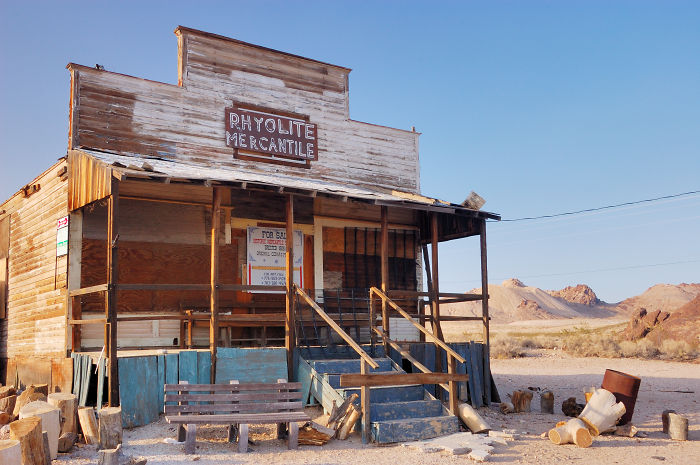
Image credits: wiki
Named after an igneous rock composed of light-colored silicates, Rhyolite saw its start in early 1905. As people were rapidly moving to Bullfrog Hills where a prospecting discovery was made, all the gold-seekers, developers, miners and service providers settled in Rhyolite, one of the surrounding mining camps.
After industrialist Charles M. Schwab bought the Montgomery Shoshone Mine in 1906, he invested in infrastructure, providing piped water, electric lines and railroad transportation that served both, the mine and the town.
However, Rhyolite declined as rapidly as it rose, with mines starting to run at a loss by the end of 1910. As the mines closed completely in 1911, the population of the town decreased rapidly and within a decade it was virtually non-existent.
Cahawba, Alabama

Image credits: wiki
Unlike most of the ghost towns in the USA, Cahawba is not one of the former mine camps. In fact, Cahawba used to be the first permanent state capital of Alabama ( from 1820 to 1825). It is located at the confluence of the Alabama and Cahaba rivers and, unfortunately, suffered many seasonal floodings because of it. That’s why the state legislature decided to move the capital to a better location in 1826. As the settlement was abandoned by its population, Cahawba became a ghost town.
It was preserved as a state historic site, the Old Cahawba Archeological Park, and people are working to develop it as a full interpretive park.
Garnet, Montana
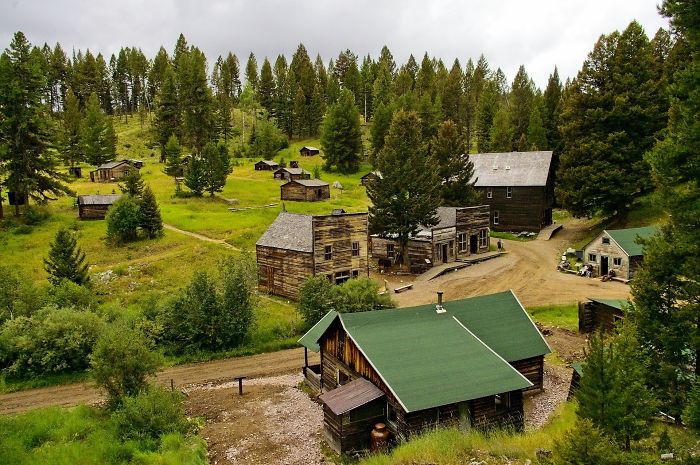
Image credits: MikeGoad
Another one of the US’ abandoned mining towns, Garnet dates back to 1860s. It was once the residential and commercial center for a heavily mined area. It is believed that in 1898 around 1000 people populated the town that was once known as Mitchell. Unsurprisingly, Garnet was abandoned two decades later, when the gold in the mines run out. Despite suffering from a fire that destroyed half of the town in 1912, Garnet is now one of the state’s best-preserved ghost towns and has 16,000 visitors annually.
Calico, California
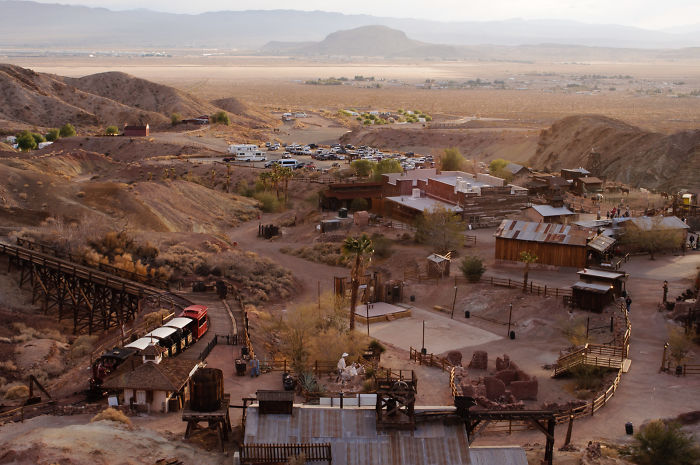
Image credits: InSapphoWeTrust
Calico is a former mining town in San Bernardino County, California, that was started in 1881 as a silver mining town. Sometime after silver was discovered in the Calico Mountains and the town was established, borate mineral colemanite was also found which increased the fortune and, naturally, the population. It is estimated that by 1890 there were 3,500 people living in Calico, with nationals of China, England, Ireland, Greece, France, and the Netherlands, as well as Americans living there. Unfortunately, 1890 was the year when silver prices dropped, making the mines non-viable. As the population dwindled within the next decade, it saw a complete fall when borax mining ceased in the region in 1907.
The town has been since restored and is a tourist destination.
Goldfield, Arizona
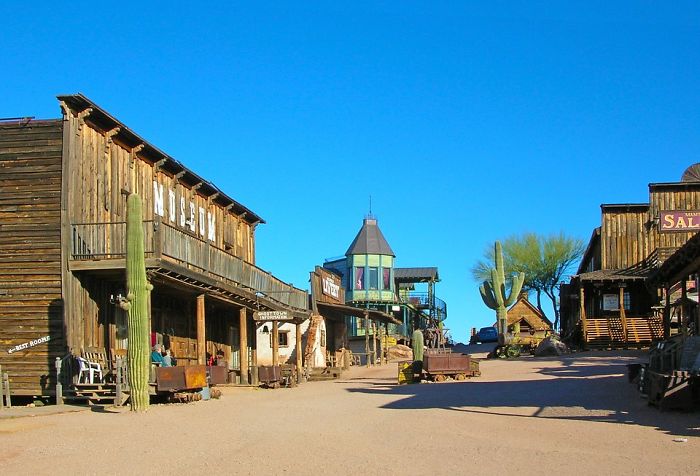
Image credits: werner22brigitte
Located between the Superstition Mountains and the Goldfield Mountains, Goldfield was once a flourishing mine camp. It was established in 1892, after very rich, high-grade gold ore was found in the area. In the following years, the town grew, and an official post office, three saloons, a boarding house, a general store, brewery, blacksmith shop, butcher shop, and a school sprout up one after another. At its peak, Goldfield had around 1,500 people living there.
Five years after Goldfield appeared, it was abandoned, due to gold ore in the mines running out.
Today, Goldfield (that was renamed to Youngberg and then back to Goldfield by new owners) is a tourist attraction, full of authentic looking buildings and includes underground mine tours.
Glenrio, Texas/New Mexico
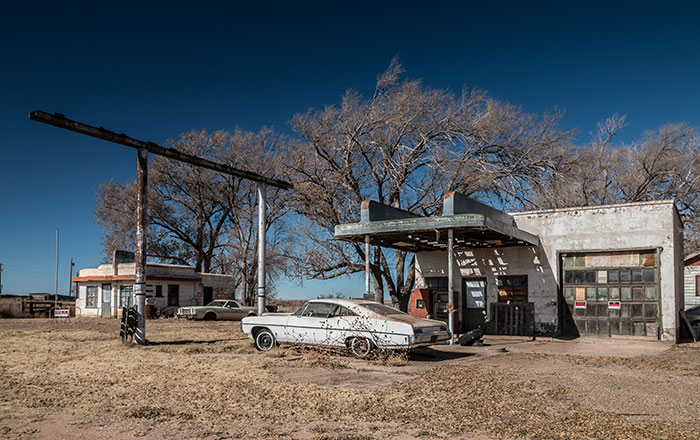
Image credits: Renelibrary
Located on the Texas-New Mexico state line, Glenrio was originally a railroad town. It was a popular stop for motorist on U.S. Route 66. As the town was on a border between two states, there were some interesting business practices. At one point all gasoline was dispensed in Texas because New Mexico had higher taxes on gas. A local bar and motel were built on the New Mexico side, because Deaf Smith County, Texas, was dry at the time and prohibited alcohol.
After Interstate 40 was built, masses who used to travel by Route 66, bypassed Glenrio leading to its decline. Today Glenrio is a ghost town, with only the memory of former glory and spirit of Route 66.
Bulowville, Florida
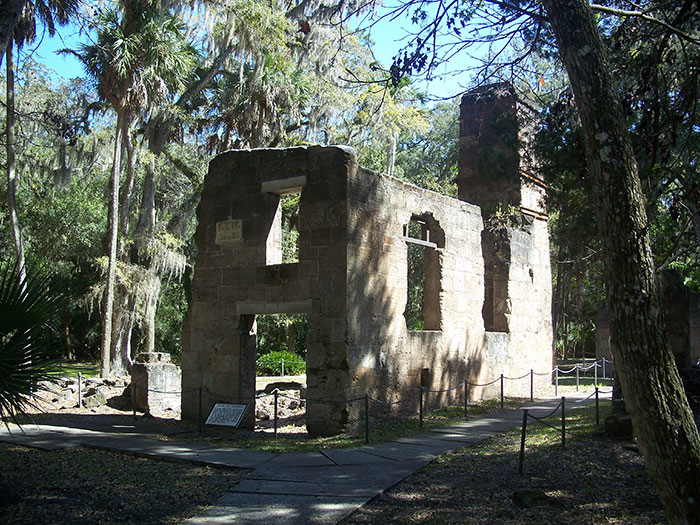
Image credits: Ebyabe
More ruins of what once was than a traditional ghost town, Bulowville was once a developing plantation with antebellum style buildings. The owners of the plantation, the Bulow family, used the labor of enslaved Africans to clear 2,200 acres for the cultivation of commodity crops such as cotton, rice, and sugarcane.
The plantation was destroyed during the Seminole War of 1836. It was turned into a Florida State Park in 1957 and added to the National Register of Historic Places in 1970.
The Bulow Plantation Ruins Historic State Park offers many activities nowadays for its visitors including hiking, fishing, kayaking, and picnicking.
Kolmanskop, Namibia
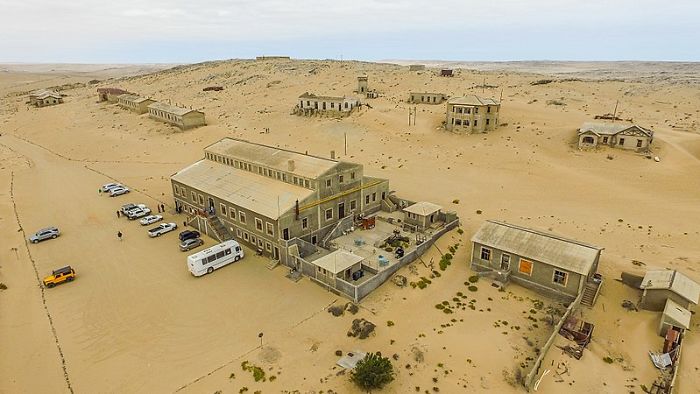
Image credits: SkyPixels
In 1908, in southern Namibia, 10 kilometers inland from the port town of Lüderitz, a worker found a diamond and showed it to his supervisor, the German railway inspector August Stauch. This led to German miners moving and settling in the area to mine diamonds. Not long after, the German Empire declared a large area as a “Sperrgebiet”, starting to exploit the diamond field.
People, roused by the enormous wealth of the first diamond miners, flocked to the area and built a village in style of a German town, with such amenities as a hospital, ballroom, power station, school, skittle-alley, theatre and sport-hall, casino, ice factory and the first x-ray-station in the southern hemisphere.
The diamond-field slowly started to deplete soon after the Second World War, leading to a decrease in population of Kolmanskop. It was completely abandoned in 1956.
Nowadays, the desert partly reclaimed the city and tourists visiting the buildings walk knee-deep in sand. It is a popular location for tourists, especially photographers, seeking to experience or capture settings of the desert sands’ reclaiming the once-thriving town. Though, since Kolmanskop is within the restricted area (Sperrgebiet), tourists need a permit to enter the town.
Plymouth, Montserrat
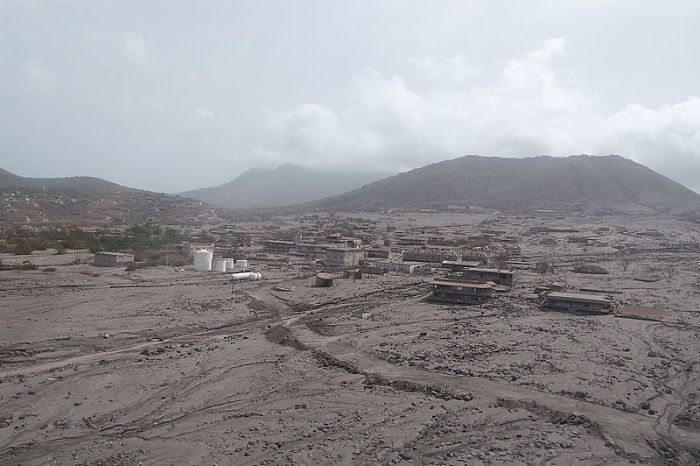
Image credits: Xb-70
Located in an overseas territory of the United Kingdom, the island of Montserrat, Plymouth was once the capital city. It was built on historical lava deposits near the Soufrière Hills volcano, that was then thought to be long-inactive. In 1995, the volcano resumed erupting, forcing people of Plymouth and surrounding areas to evacuate. It was completely abandoned 2 years later after the city was mostly destroyed by fire and covered in dust and debris. As volcanic activity continued, the entire southern half of the island was declared an exclusion zone. Despite being abandoned and in the exclusion zone, Plymouth still remains the de jure capital city of Montserrat, which makes it the only ghost town that serves as the capital of a political territory.
Varosha, Famagusta, Cyprus
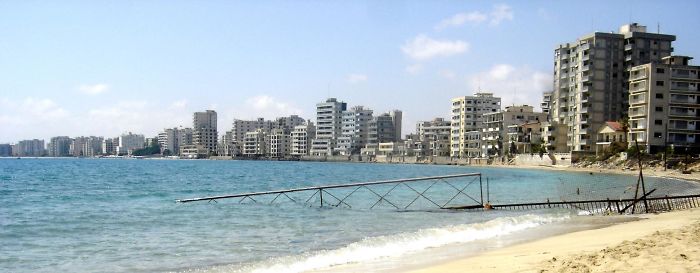
Image credits: TomasNY
an abandoned southern quarter of the Cypriot city of Famagusta, Varosha was once a modern tourist area. It was so popular, by the 1970s Varosha was the number-one tourist destination in entire Cyprus. This led to rising in new buildings, mostly hotels and various tourist attractions. At its peak, Varosha was the number one tourist destination in the world and saw such guests as Elizabeth Taylor, Richard Burton, and Brigitte Bardot.
It all changed with the Turkish invasion of Cyprus in 1974 when the area came under Turkish control. The residents of Varosha fled and the area has remained abandoned and under the occupation of the Turkish Armed Forces. To this day, Varosha is uninhabited and entry is forbidden to the public.
Akarmara, Abkhazia/Georgia
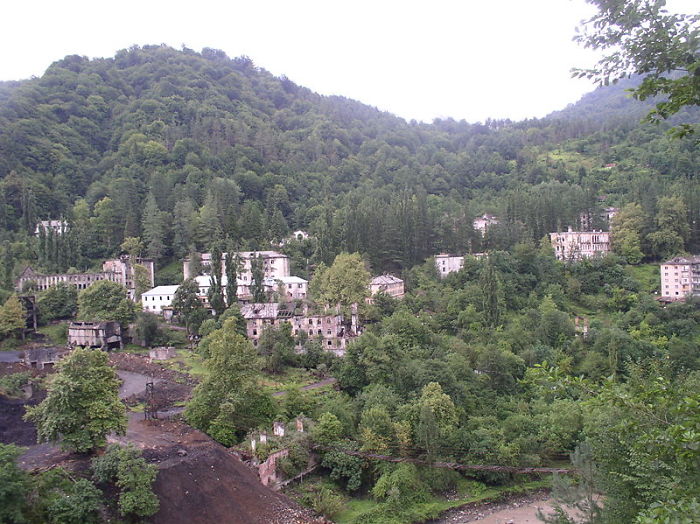
Image credits: Alaexis
Akarmara is part of a larger settlement of Tkvarcheli, located in Georgia. It was once a successful coal-mining town that became important during World War II. However, with surrounding conflicts and a declining economy, the mines closed one after another, forcing people to relocate.
As the siege of Tkvarcheli cut supplies to Akarmara in the early 1990s, as well as effectively cut the population from the rest of Abkhazia, residents relied on supplies being helicoptered in by Russian and separatist forces for 413 days.
Nowadays, Akarmara is swarming with people, although not citizens, but mostly tourists, eager to experience the elaborate Soviet architecture and see the now-closed mines.
Craco, Italy
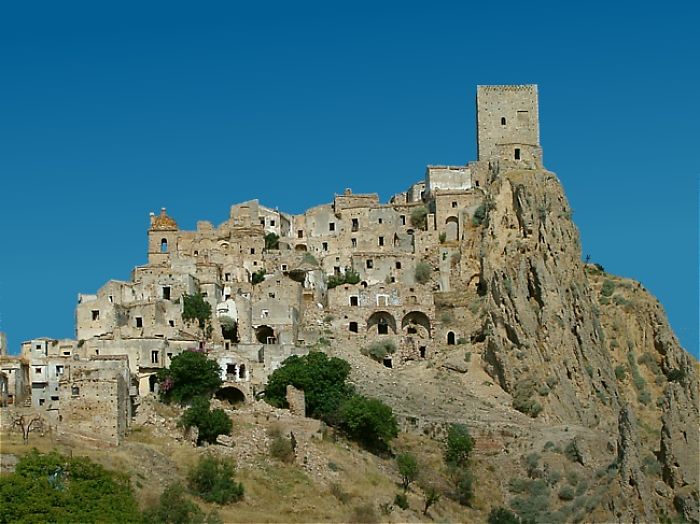
Image credits: wiki
This historic area dates back to 540 BC, when Greeks moved inland from the coastal town of Metaponto and named the area Montedoro. Through centuries it was a successful settlement, with a university, four large palazzi, and growing population.
In 1656, a plague struck and reduced the number of citizens by hundreds. Craco persisted through many conflicts, however, its ultimate downfall was out of the resident’s control as it was environmental and geological.
First, in 1892 – 1922, a large chunk of the population migrated to North America mainly due to poor agricultural conditions. Then, in 1963, Craco started to be evacuated due to a landslide. Following an earthquake in 1980, the site was completely abandoned.
Nowadays, the location is a popular tourist attraction as well as a set for movies, including Quantum of Solace and The Passion of The Christ.
Pripyat, Ukraine
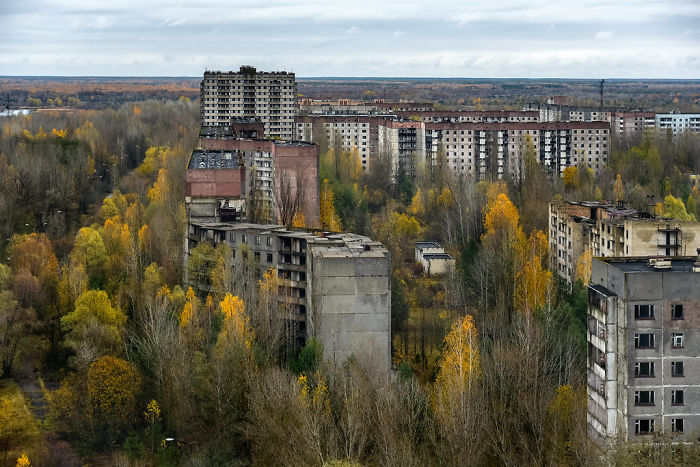
Image credits: Jorge Franganillo
Perhaps one of the best-known ghost cities in the world, Pripyat in Ukraine was founded in 1970, as the ninth nuclear city in the Soviet Union, to support the nearby Chernobyl Nuclear Power Plant. By the time it was evacuated a day after the Chernobyl disaster, on the afternoon of April 27, 1986, the city had a population of 49,360. Naturally, after the disaster, the city was abandoned and soon became a ghost city.
Nowadays, as radiation levels declined, more and more tourist visit the location, and various Ukrainian companies offer guided tours around the area.
Oradour-sur-Glane, France
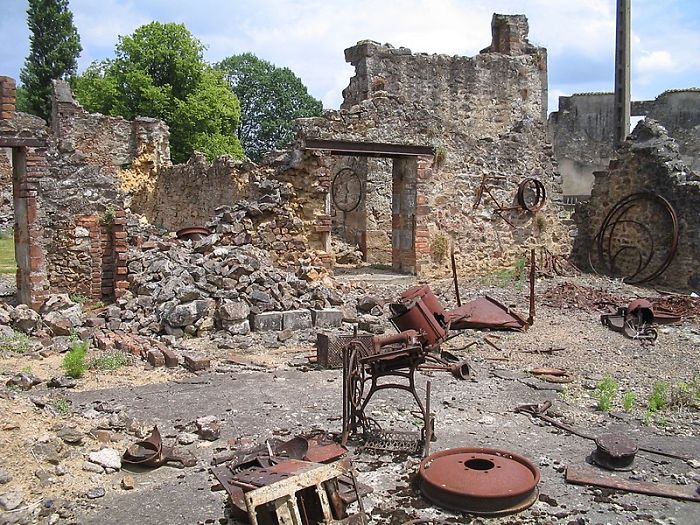
Image credits: Dna-Dennis
Oradour-sur-Glane was a village in the Nouvelle-Aquitaine region in west-central France. It was destroyed on 10 June 1944, when 642 of its inhabitants, including women and children, were massacred by a German Nazi soldier company. Out of the entire village’s population, only around 30 survived the massacre, with 20 escaping the village before the SS unit arrived.
The unit, led by Adolf Diekmann, sealed the city and forced everyone out of their houses. Men were led into the sheds where they were shot by machine guns and later set ablaze. Only 6 men escaped, although one was later shot dead.
Women and children were locked in a church where the soldiers set off an incendiary device. As victims were trying to escape through the windows, they were met with machine-gun fire. Out of 247 women and 205 children in the church, only one 47-year-old woman managed to survive. She escaped through a window, was non-fatally shot and managed to crawl into the bushed where she hid overnight.
After the war, the then French president, Charles de Gaulle, decided that the village should be turned into a memorial. A new village of the same name was built nearby.
Wittenoom, Western Australia
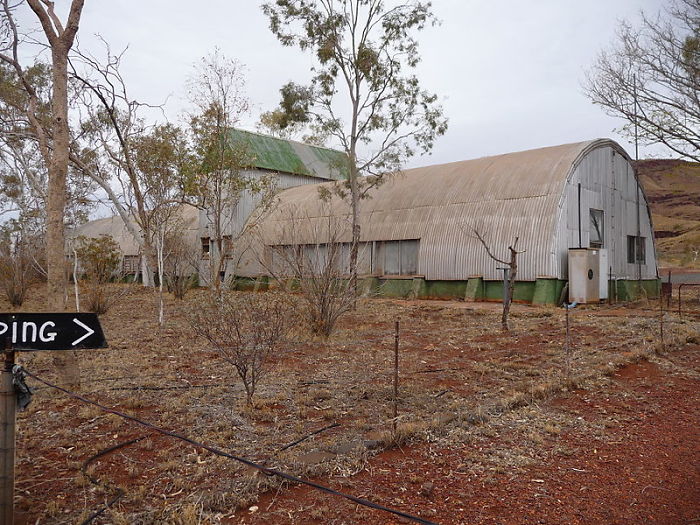
Image credits: Five Years
Wittenoom, a once-thriving mining town in West Australia, is now a ghostly aftermath of an industrial disaster.
The town was established in 1946, right during the mining boom. The land around was rich in blue asbestos, which is now considered the most hazardous of the six types of asbestos. However, in 1966 the mine was closed due to unprofitability and growing health concerns from asbestos mining.
Wittenoom, an old mining town, was officially erased from Australian maps in 2007, with roads leading to contaminated areas blocked. However, that doesn’t scare away thousands of travelers who visit the area every year as a form of extreme tourism.
Picher, Oklahoma
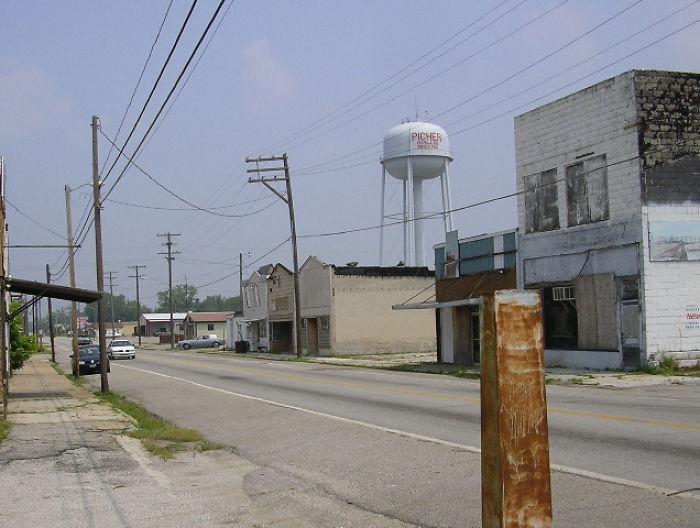
Image credits: Tim Dowd
One of a few cities that had to be evacuated due to health hazards caused by mining, Picher was once a major source for lead and zinc. Picher saw its beginning around 1913 when the two metals were discovered in the area. Mining work started soon after that. At its peak in 1926, the population grew to 14,252 residents, however, in the following decades the number dwindled as mining activity decreased. By 1960 the number of people living in the city was 2,553.
As the mines were left abandoned, the contamination left behind was so severe that by 2006 the government decided to close Picher and relocate its residents. Gary Linderman, city’s pharmacist, vowed to stay as long as there was anyone left who needed him and to be the last one out of the city. He died in 2015, at age 60 after a sudden illness as the last resident of Picher.
Dhanushkodi, India
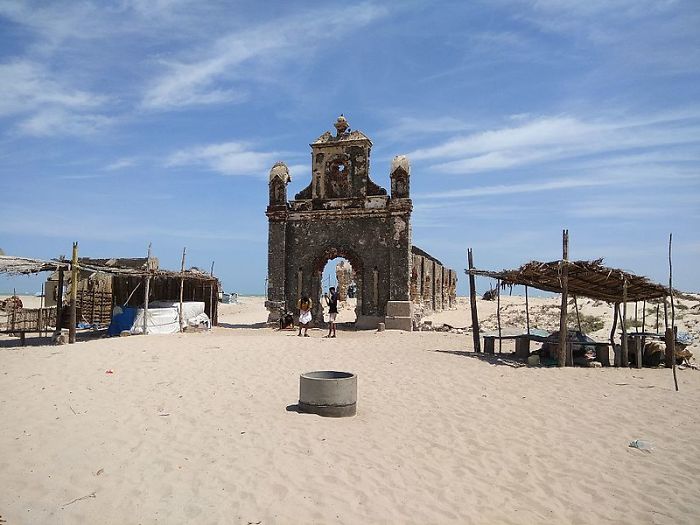
Image credits: D Kartikeyan
Dhanushkodi was once a simple Indian city, full of life and laughter. People could come and go by passenger trains, enjoy the sights of the Laccadive Sea on one side and Palk Strait on the other. However, everything changed when the 1964 Rameswaram cyclone hit the city. With winds as strong as 280 kilometres per hour (170 mph) and tidal waves were 7 metres (23 ft) high, the cyclone hit the city on the night of 22–23 December 1964.
Around 1,800 people died in the cyclonic storm and the town was marooned. The Government of Madras declared Dhanushkodi as a ghost town, unfit for living.
Today it’s a popular tourist destination where people can see the ruins left behind as well as take scenic photos at Dhanushkodi Beach Point.
Kłomino, Poland
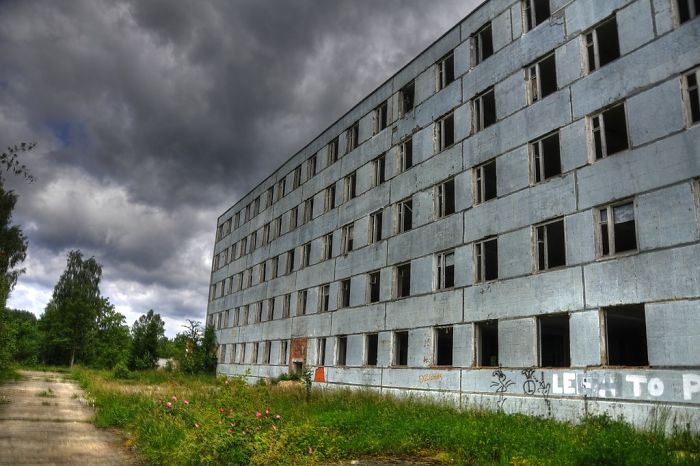
Image credits: Kamil Porembiński
Kłomino was a little village known as Westfalenhof in the early 20th century in a former German province of Pomerania. During World War II, the Germans opened a POW camp in the area where Polish soldiers, civilians as well as the French army officers were held.
In January 1945, Westfalenhof was captured by the advancing Red Army and was once again turned into a military base called Grodek, this time in Soviet hands. Around 6,000 Soviet soldiers lived there.
After the collapse of the Soviet Union, Grodek was renamed to a Polish name, Kłomino, and the government put it up for sale. However, no one was interested in buying it and too few people moved to live there, prompting the government to leave the city abandoned.
At the moment, only 5 residents live there and most of the remaining buildings have been looted or destroyed.
Val-Jalbert, Canada
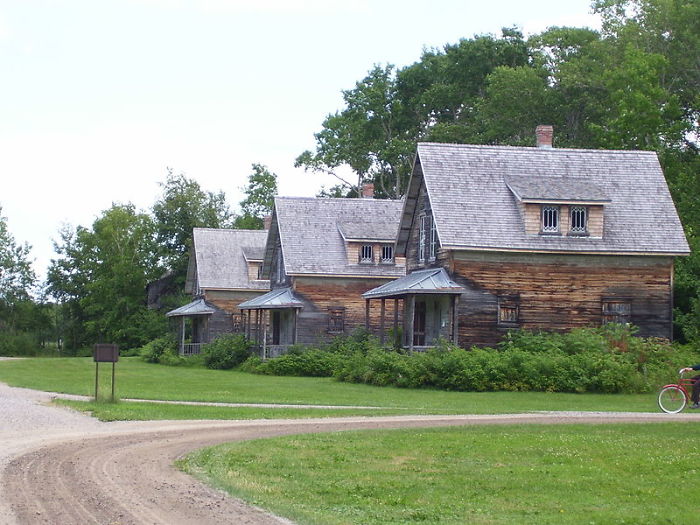
Image credits: Audreyannbrousseau
Located 8 km (5 mi) northwest of the town of Chambord, Val-Jalbert was founded in 1901 and soon grew as Damase Jalbert built a pulp mill nearby. Unfortunately, the mill was closed in 1927 which led to the village being deserted. It was turned into a park in 1960 with over 70 original abandoned buildings still standing, making Val-Jalbert one of the best-preserved ghost town in Canada.
from Bored Panda http://bit.ly/2EtF4MY
via Boredpanda
